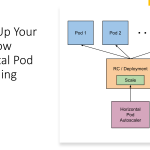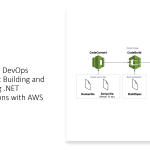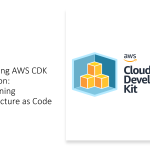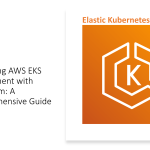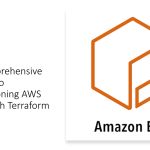Imagine how efficient your cloud operations could be if you could use your familiar programming languages to define your cloud infrastructure? Interestingly, Amazon’s Cloud Development Kit (CDK) makes this possible. Developers can leverage high-level components to define their infrastructure in code, simplifying the process and giving them more control. This blog will delve into the new and improved version of CDK, v2, and how it compares to its predecessor, CDK v1. We’ll also provide a practical guide on migrating from CDK v1 to CDK v2 with Python.
Introduction
The Cloud Development Kit (CDK) is a powerful, open-source framework from Amazon Web Services (AWS) that enables developers to model and provision cloud resources using familiar programming languages like Python, Java, TypeScript, and C#. By defining infrastructure as code, CDK eliminates the need for manual creation and configuration of resources in the AWS Management Console. This allows developers to focus on building applications rather than managing infrastructure, translating to faster development cycles and more efficient deployment.
CDK v1 was a huge step forward in infrastructure management. However, Amazon didn’t stop there. They introduced CDK v2, which retains all the good parts of v1 and adds significant improvements. We’ll dive into Amazon CDK v2’s key enhancements, look at how Python is used, and guide you on migrating from CDK v1 to v2.
Benefits of Amazon CDK v2
The release of CDK v2 has resulted in significant enhancements in performance and efficiency. Firstly, by adopting TypeScript as the primary development language, CDK v2 brings strong typing and class-based object-oriented programming to the table. This leads to more robust code, fewer bugs, and reduced deployment times.
Furthermore, CDK v2 has significantly improved the developer experience. The simplified syntax, streamlined APIs, and improved error messages make it faster and easier for developers to code, debug, and deploy their applications. Moreover, the updated CDK toolkit comes with additional commands and options that enhance productivity.
CDK v2 also shines in resource management. It introduces support for nested stacks, allowing developers to break down complex applications into smaller, more manageable units. Additionally, CDK v2 handles custom resources better, making it easier for developers to incorporate unique requirements into their AWS environments.
Key Improvements in CDK v2 using Python
Python developers will find several improvements in CDK v2. Here are some of the standout features:
- Easier Resource Declaration: With CDK v2, declaring AWS resources has become more intuitive and less error-prone, thanks to the simplified syntax and improved type hinting.
- Improved Type Checking and Auto-completion: CDK v2 has better integration with Python IDEs, providing features like type checking and auto-completion, making coding faster and more precise.
- Enhanced Customization Options: You can now easily customize your AWS resources with the new and improved CDK v2 constructs.
Migrating from CDK v1 to CDK v2
Why is Migration Important?
Migration from CDK v1 to CDK v2 is essential as it allows developers to take advantage of the latest improvements and features. It also provides the chance to improve existing code and eliminate potential bugs or inefficiencies.
Compatibility Issues and Necessary Changes
It’s important to note that CDK v2 is not backward compatible with v1, meaning some changes are necessary for a successful migration. These changes may include adjusting import statements and modifying the CDK toolkit commands.
Tools and Resources for Migration
AWS has provided several tools and resources to aid in the migration process. The CDK Migrate tool automates many of the necessary changes, while the AWS-provided migration guide offers step-by-step instructions.
Best Practices for Smooth Migration
Following best practices can ensure a smooth migration. This includes testing your application thoroughly before migration, planning and scheduling the migration to minimize disruptions, and carefully following the instructions in the AWS migration guide.
Setting up CDK v2 with Python
Getting started with CDK v2 and Python is easy. First, install the CDK v2 toolkit using the npm package manager. Next, create a new CDK project with the cdk init command, specifying Python as the language.
Configure the project for deployment by adding a stack and specifying the necessary resources. Then, add any required dependencies and packages, such as AWS constructs or libraries. Finally, verify the project setup by checking the project structure and running the cdk synth command to view the CloudFormation template.
Declaring AWS resources with CDK v2 and Python
With CDK v2, declaring AWS resources using Python is straightforward:
- CDK Constructs: Constructs are the building blocks of AWS CDK apps. A construct represents a “cloud component” and encapsulates everything AWS CloudFormation needs to create the component.
- Declaring Stacks and Resources: With Python, you can declare stacks and resources in a CDK application by instantiating AWS constructs and passing in the stack and an identifier.
- Using Python Libraries and Modules: Python’s robust libraries and modules can be used in conjunction with CDK v2, enhancing the functionality and reducing the amount of boilerplate code.
Deploying and managing CDK v2 projects
Once you have your CDK v2 project set up, and the resources declared, deploying the project is a simple process. You can deploy the project using the CDK toolkit, which automatically manages the deployment process, including creating or updating the necessary AWS resources.
After deployment, you may need to update your stack from time to time. CDK v2 makes this process easy, allowing you to specify the changes in your code and deploy the updates using the CDK toolkit.
Stack and resource management is also simplified with CDK v2. The toolkit provides commands to list, inspect, and delete the stacks in your application. You can also manage the permissions and dependencies for your resources directly in your code.
Advanced Features and Integrations in CDK v2 with Python
CDK v2 comes packed with advanced features that make it a powerful tool for AWS infrastructure management. It supports high-level abstractions called constructs, which allow you to work at a higher level than raw CloudFormation templates.
CDK v2 also allows for direct interaction with AWS resources. This opens up a world of possibilities, including fetching resource outputs and invoking Lambda functions directly from your CDK code.
In conclusion, the release of Amazon CDK v2 brings significant improvements over v1. Even better, Python developers can easily leverage these improvements to manage their AWS infrastructure more effectively. So if you’re still on v1, consider migrating to v2 to take advantage of these exciting features.
References
https://docs.aws.amazon.com/cdk/api/v2/
